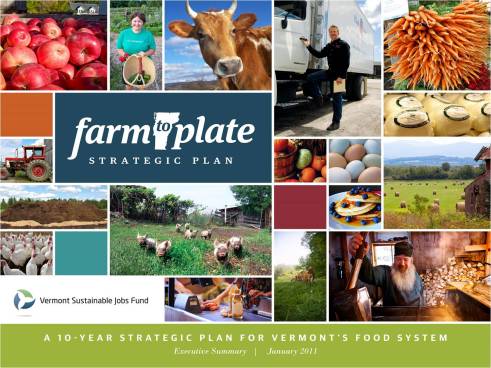
As we near the New Year, I urge this: please try a new vegetable in the year ahead. There are many not yet popular vegetables that are totally delicious. Celeriac sales are limited to the most adventurous few shoppers. And though sweet and said to prevent cancer, the long, white daikon radishes sit untouched on market tables. Sadly the rutabaga, one of our favorite vegetables, all too often falls into this category as well.
The first time I ate rutabaga was probably only five years ago, when I moved to Vermont. I grew up in Kansas, and though our dinner plates always had vegetables, they were more standard fare from the grocery store, like carrots and broccoli. I’ve grown to like rutabaga so much that this year, upon hearing that our planting of rutabaga was less than we’d hoped, friends at Evening Song Farm gave me a bag of it for my birthday.
Rutabagas are believed to have originated in the 1600s, much more recently than spinach, for example, which has been cultivated for about 2,000 years. The rutabaga began as the result of the chance cross-pollination of a turnip and a wild cabbage. The rest is history.
It’s sweet root is tasty a variety of ways, and can be stored through the winter in a root cellar or refrigerator. The leaves are edible and similar to those of its popular relative, kale. Rutabagas are low in calories but off the charts in vitamins and minerals like calcium and potassium. These minerals are essential for healthy cell function in our bodies.
When you venture to the farmers’ market or co-op to buy a locally grown rutabaga, look for one that is firm and feels dense. Size is less important. We rarely peel the rutabagas we grow, and generally wouldn’t peel most organic produce. If you want the greens, you may have to make a special request at the market next fall when rutabagas are harvested again, or try growing a few in your own garden.
Here are a few recipes geared toward both the traditional and the adventurous:
Mashed Rutabaga
My fiancé’s family has served this dish at Christmas for as long as he can remember and probably longer, though it is referred to as “mashed turnip” instead. Now that we bring this dish, there’s no sugar in the recipe because the rutabagas we grow at Alchemy Gardens are plenty sweet. If you have a sweet tooth, you can add maple syrup or sugar, but we recommending trying it beforehand.
- 2-3 lb. rutabaga, peeled and cut into large chunks
- 2-6 T. butter
- salt and pepper, to taste
Put chopped rutabaga into a pot and cover with cold, salted water. Bring to a boil; reduce heat, cover, and simmer for 25 to 30 minutes or until tender. Drain rutabaga and then mash, incorporating butter to taste. Season with salt and pepper.
Mexican Rutabaga and Sweet Potato
This is one of our go-to vegetarian meals. We roast the rutabaga and sweet potatoes, sauté some onions and kale or rutabaga greens, and throw it all into a tortilla with some beans on the side. Yum!
- 2 large rutabaga
- 2 sweet potatoes
- Olive, Sunflower or Canola oil
- Cumin, to taste
- Chili powder, to taste
- Pinch of oregano
Cube sweet potatoes and rutabaga into similar sized pieces. Place together in baking dish. Coat with oil, salt and pepper, and spices. Bake in 375˚ oven for about 45 min or until tender, stirring occasionally.
Rutabaga Fries
These oven-baked fries are divine. It’s not likely that you’ll have leftovers…no matter how many you cook!
- Rutabagas
- Sunflower Oil (or other high heat oil)
- Salt
Preheat oven to 425˚. Cut rutabaga into strips (fries). Drizzle with enough oil to barely coat all fries. Season with salt, and/or other spices. Spread onto baking sheet. Bake 20-40 min. or until tender (baking time will depend on size of fries). Flip fries halfway through.
Lindsay Arbuckle & Scott Courcelle own Alchemy Gardens, a farm business growing vegetables and herbs in West Rutland. You can reach her at alchemygardens@gmail.com.


